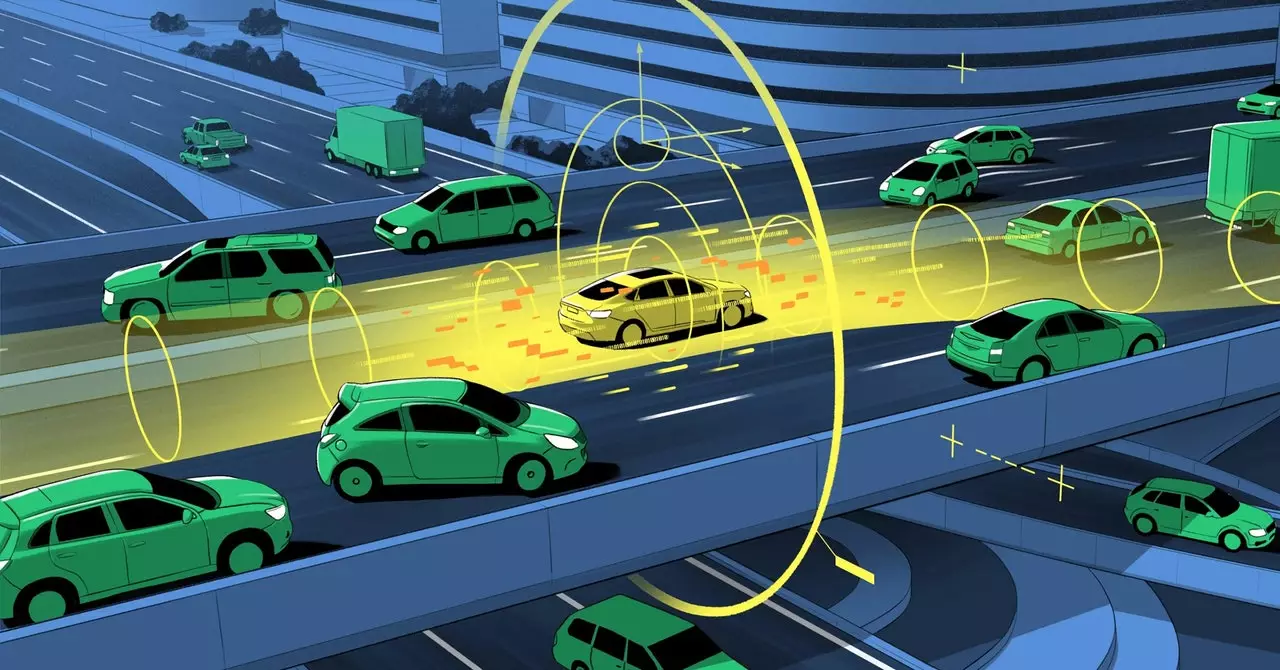With the rise of driverless cars and planes, the future of transportation is rapidly changing. However, concerns about safety still loom large. The National Highway Traffic Safety Administration reported hundreds of crashes involving autonomous control, resulting in fatalities and injuries. Testing alone cannot guarantee the safety of these systems, as flaws may go unnoticed. However, a team of researchers led by Sayan Mitra from the University of Illinois, Urbana-Champaign, has developed a groundbreaking method to prove the safety of autonomous vehicles. By focusing on guaranteeing the reliability of the vehicle’s perception system, Mitra’s team is paving the way for safer and more trustworthy autonomous transportation.
Autonomous vehicles rely on two main components: the perceptual system and the control system. The perceptual system uses machine-learning algorithms based on neural networks to analyze raw data from cameras and other sensory tools, recreating the environment outside the vehicle. This system provides crucial information, such as the vehicle’s position within a lane or the orientation of an aircraft. However, there is no guarantee that these perception results are entirely accurate or reliable.
To provide a safety guarantee, Mitra and his team focused on quantifying the uncertainties introduced by the perception system. They aimed to determine the extent of error and inaccuracies within the system’s re-creation of the vehicle’s surroundings. This process involved identifying and addressing the “known unknowns,” or the uncertainties that arise from factors like sensor accuracy, weather conditions, and external interference. By quantifying the error band within which the system operates, Mitra’s team created what they call a “perception contract”- a commitment that the system’s output will fall within a specified range, ensuring safety.
End-to-end safety guarantees are essential for autonomous vehicles to gain public trust and widespread adoption. Mitra’s method of providing these guarantees is viewed as a significant breakthrough by experts in the field. Corina Pasareanu from Carnegie Mellon University and NASA’s Ames Research Center acknowledged the importance of Mitra’s work, emphasizing how it can enhance safety in various domains, such as autonomous aerial vehicles.
Mitra’s team’s strategy for ensuring perception safety has far-reaching implications. The research is being utilized to aid in landing drones on aircraft carriers, where precise perception is crucial for safe operations. The aerospace industry also plans to incorporate this method into experimental aircraft testing. By providing safety guarantees, this approach can revolutionize the field of autonomous transportation and alleviate concerns about the technology’s reliability.
The future of autonomous vehicles hinges on addressing safety concerns. Testing alone is insufficient to guarantee the reliability of perception systems in autonomous vehicles. Through their groundbreaking research, Sayan Mitra and his team have developed a method to ensure the safety of these systems. By quantifying uncertainties and creating perception contracts, Mitra’s team has paved the way for end-to-end safety guarantees. This breakthrough has enormous implications for the adoption of autonomous vehicles in various domains and brings us one step closer to a safer and more efficient transportation future.


Leave a Reply